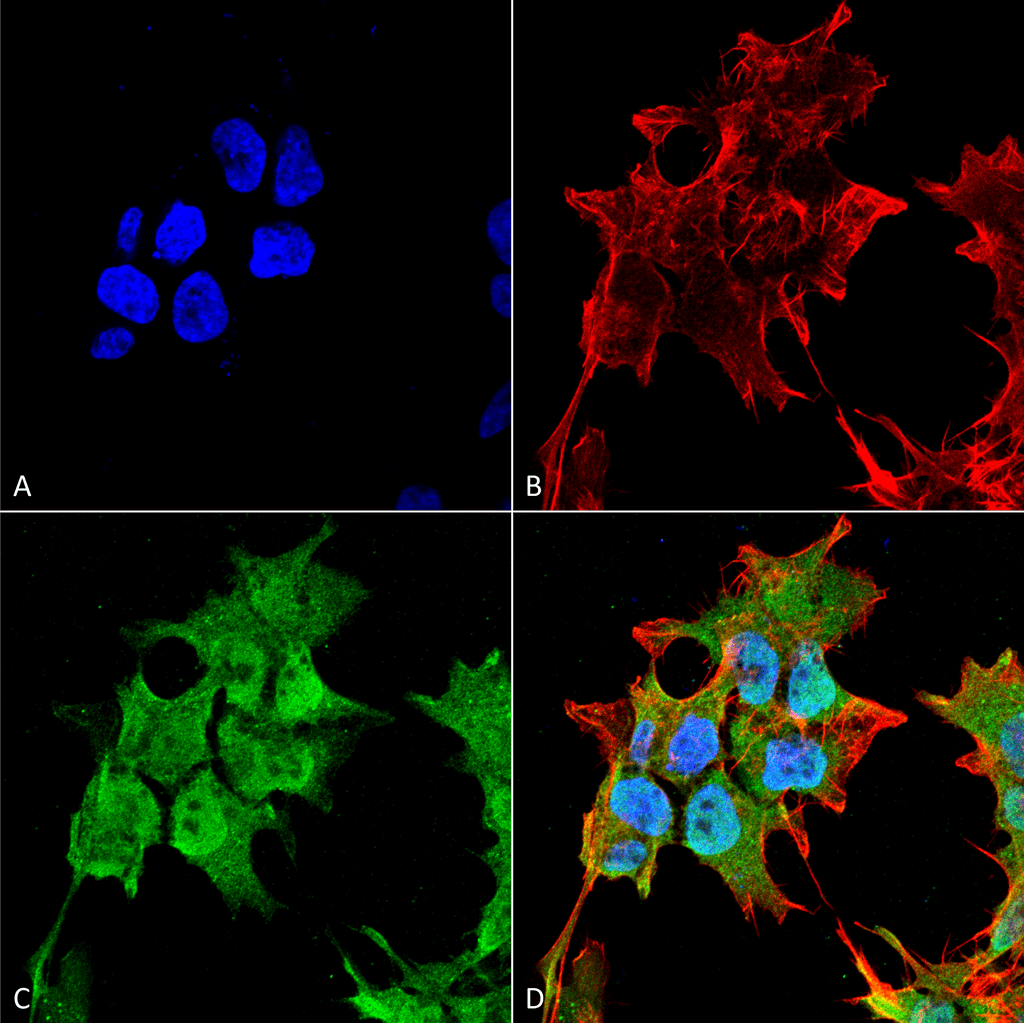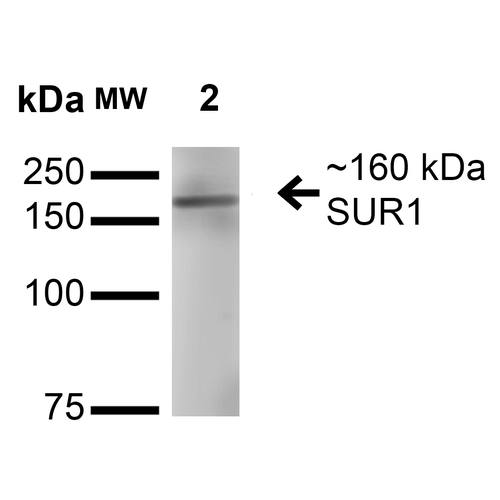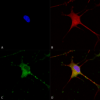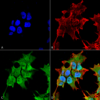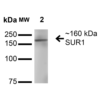Anti-SUR1 Antibody (11567)
$466.00
| Host | Quantity | Applications | Species Reactivity | Data Sheet | |
|---|---|---|---|---|---|
| Mouse | 100ug | WB,IHC,ICC/IF | Human, Mouse, Rat |  |
SKU: 11567
Categories: Antibody Products, Ion Channel Antibodies, Products
Overview
Product Name Anti-SUR1 Antibody (11567)
Description Anti-SUR1 Mouse Monoclonal Antibody
Target SUR1
Species Reactivity Human, Mouse, Rat
Applications WB,IHC,ICC/IF
Host Mouse
Clonality Monoclonal
Clone ID S289-16
Isotype IgG1
Immunogen Fusion protein corresponding to aa 1548-1582 (cytoplasmic C-terminus) of rat SUR1 (accession no. NP_037171.2).
Properties
Form Liquid
Concentration Lot Specific
Formulation PBS, pH 7.4; 50% glycerol, 0.09% sodium azide.
Buffer Formulation Phosphate Buffered Saline
Buffer pH pH 7.4
Buffer Anti-Microbial 0.09% Sodium Azide
Buffer Cryopreservative 50% Glycerol
Format Purified
Purification Purified by Protein G affinity chromatography
Specificity Information
Specificity This antibody recognizes human, mouse, and rat SUR1. It does not cross-react with SUR2B.
Target Name ATP-binding cassette sub-family C member 8
Target ID SUR1
Uniprot ID Q09429
Alternative Names Sulfonylurea receptor 1
Gene Name Abcc8
Accession Number NP_037171.2
Sequence Location Cell membrane, Multi-pass membrane protein
Biological Function Subunit of the beta-cell ATP-sensitive potassium channel (KATP). Regulator of ATP-sensitive K(+) channels and insulin release. {UniProtKB:Q09428}.
Research Areas Ion Channels
Background Sulfonylurea receptors (SUR) are membrane proteins that are molecular targets of the sulfonylurea class of antidiabetic drugs whose mechanism of action is to promote insulin release from pancreatic beta cells. SUR proteins are subunits of the inward-rectifier potassium ion channels Kir6.x (6.1 and 6.2). The association of four Kir6.x and four SUR subunits form an ion conducting channel commonly referred to as the KATP channel. The primary function of the SUR is to sense intracellular levels of ATP and ADP and facilitate the opening or closing of its associatedKir6.x potassium channel, thus monitoring the energy balance within cells.
Application Images
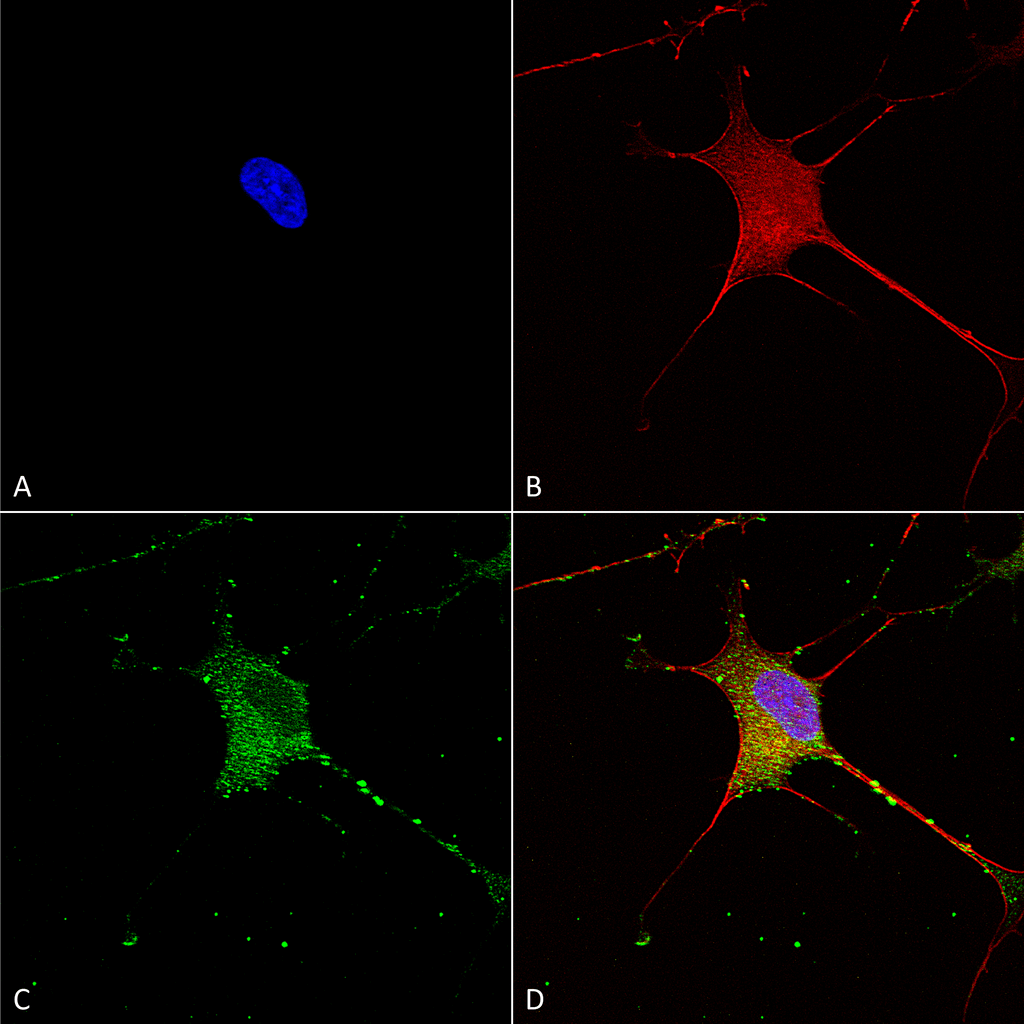



Description Immunocytochemistry/Immunofluorescence analysis using Mouse Anti-SUR1 Monoclonal Antibody, Clone S289-16 (11567). Tissue: Neuroblastoma cells (SH-SY5Y). Species: Human. Fixation: 4% PFA for 15 min. Primary Antibody: Mouse Anti-SUR1 Monoclonal Antibody (11567) at 1:50 for overnight at 4°C with slow rocking. Secondary Antibody: AlexaFluor 488 at 1:1000 for 1 hour at RT. Counterstain: Phalloidin-iFluor 647 (red) F-Actin stain; Hoechst (blue) nuclear stain at 1:800, 1.6mM for 20 min at RT. (A) Hoechst (blue) nuclear stain. (B) Phalloidin-iFluor 647 (red) F-Actin stain. (C) SUR1 Antibody (D) Composite.

Description Immunocytochemistry/Immunofluorescence analysis using Mouse Anti-SUR1 Monoclonal Antibody, Clone S289-16 (11567). Tissue: Neuroblastoma cell line (SK-N-BE). Species: Human. Fixation: 4% Formaldehyde for 15 min at RT. Primary Antibody: Mouse Anti-SUR1 Monoclonal Antibody (11567) at 1:100 for 60 min at RT. Secondary Antibody: Goat Anti-Mouse ATTO 488 at 1:100 for 60 min at RT. Counterstain: Phalloidin Texas Red F-Actin stain; DAPI (blue) nuclear stain at 1:1000, 1:5000 for 60min RT, 5min RT. Localization: Cytoplasm, Nucleus. Magnification: 60X. (A) DAPI (blue) nuclear stain. (B) Phalloidin Texas Red F-Actin stain. (C) SUR1 Antibody. (D) Composite.

Description Western Blot analysis of Rat Brain Membrane showing detection of ~160 kDa SUR1 protein using Mouse Anti-SUR1 Monoclonal Antibody, Clone S289-16 (11567). Lane 1: Molecular Weight Ladder. Lane 2: Rat Brain Membrane. Load: 15 µg. Block: 2% BSA and 2% Skim Milk in 1X TBST. Primary Antibody: Mouse Anti-SUR1 Monoclonal Antibody (11567) at 1:200 for 16 hours at 4°C. Secondary Antibody: Goat Anti-Mouse IgG: HRP at 1:1000 for 1 hour RT. Color Development: ECL solution for 6 min in RT. Predicted/Observed Size: ~160 kDa.
Handling
Storage This antibody is stable for at least one (1) year at -20°C.
Dilution Instructions Dilute in PBS or medium which is identical to that used in the assay system.
Application Instructions Immunoblotting: use at 1-2ug/mL. A band of ~160kDa is detected.
Immunohistochemistry: use at 1-10ug/mL.
These are recommended concentrations. User should determine optimal concentrations for their application.
Positive control: Mouse brain membranes.
Immunohistochemistry: use at 1-10ug/mL.
These are recommended concentrations. User should determine optimal concentrations for their application.
Positive control: Mouse brain membranes.
References & Data Sheet
Data Sheet  Download PDF Data Sheet
Download PDF Data Sheet
 Download PDF Data Sheet
Download PDF Data Sheet


